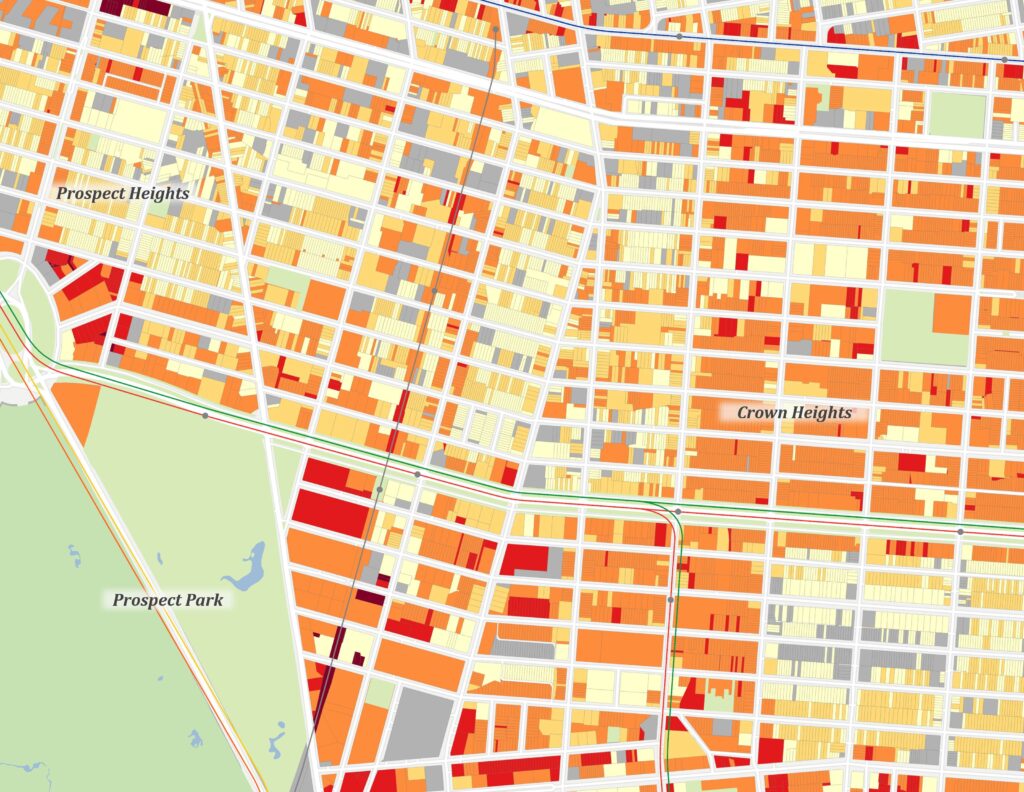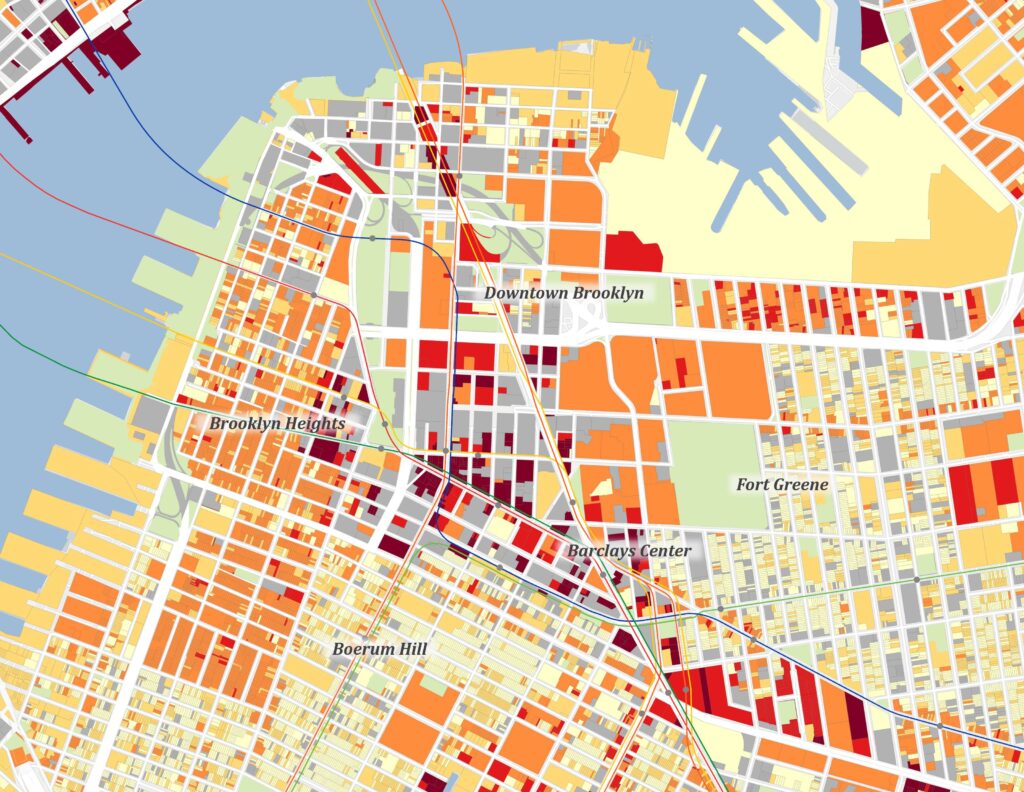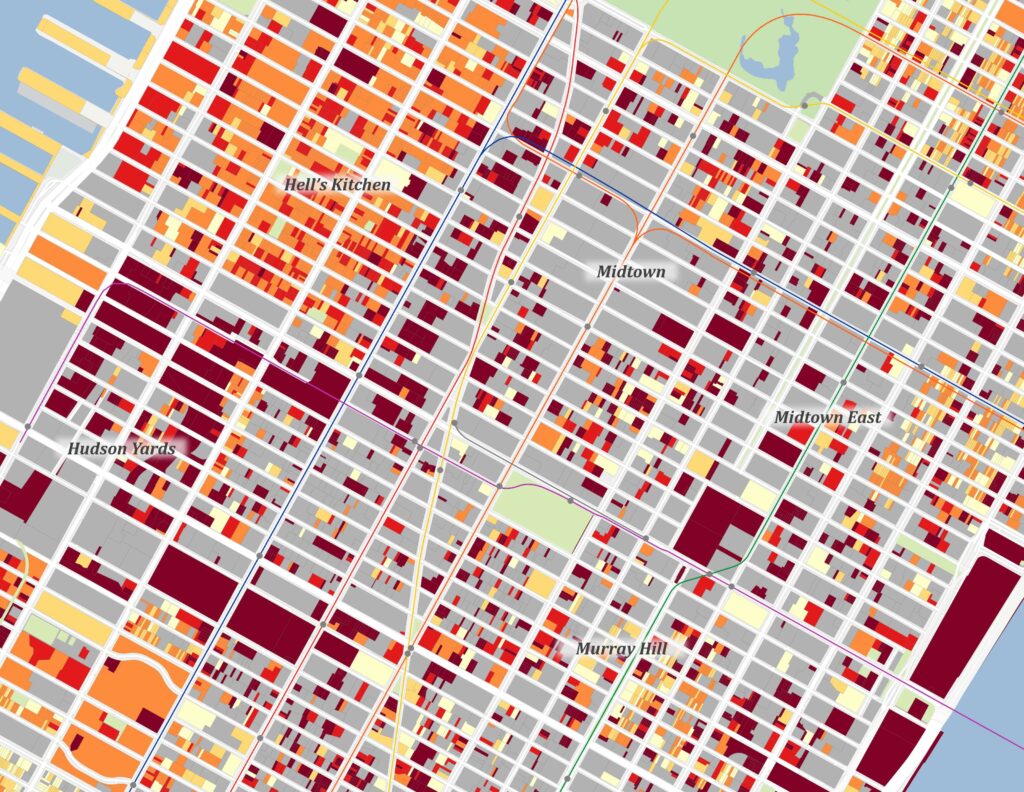“City of Yes”: Unlocking New York City’s Housing Potential
Our Buildings + Places Advisory team conducted an analysis of New York City’s “City of Yes” initiative to uncover where zoning changes unlock new opportunities for much-needed housing development.
On December 5, 2024, New York City adopted City of Yes for Housing Opportunity, the most significant update to the city’s zoning code since 1961. The city faces a persistent housing shortage, with experts estimating that 473,000 additional housing units will be needed by 2032 to meet demand. City of Yes aims to address this this issue by increasing allowable housing density, facilitating office-to-residential conversions, and reducing parking requirements. In doing so, the initiative is expected to enable the creation of 80,000 new housing units over the next 15 years.
How City of Yes expands housing development
A key feature of the plan is the Universal Affordability Preference (UAP) program, which allows developers in medium- and high-density areas to build 20% more housing if the additional units are affordable to households earning 60% of the Area Median Income (AMI). This policy was designed to complement the 485-x tax incentive, ensuring that new residential projects remain financially viable.
The Floor Area Ratio (FAR) increases enabled by City of Yes vary by zoning district, street width, and whether the site is inside or outside the Manhattan core. Developments in historic districts still must adhere to the Landmarks Preservation Commission’s regulations to preserve neighborhood character.
Where does this create the biggest opportunity?
To better understand the impact of these zoning changes, our team at AECOM mapped the new maximum allowable floor area under the UAP program. By comparing previous limits with new maximums, our team identified neighborhoods with the greatest newly unlocked development potential. Use the interactive map below to explore the impact of the City of Yes in each neighborhood. To find a specific area, use the search function in the top right corner. The legend is found immediately below the search function.

Percent Increase in Maximum Allowable Square Footage by Neighborhood
Some neighborhoods saw substantial increases in their development potential. Park Slope and Prospect Heights in Brooklyn, along with Bronx Park in the Bronx, have seen the largest increases in maximum allowable square footage under City of Yes.
| Neighborhood | Percent Increase in Maximum Allowable SF |
| Park Slope (Brooklyn) | 19.8% |
| Prospect Heights (Brooklyn) | 17.6% |
| Bronx Park (Bronx) | 17.4% |
| Bedford-Stuyvesant (East) (Brooklyn) | 15.5% |
| Bedford-Stuyvesant (West) (Brooklyn) | 15.0% |
| Hamilton Heights-Sugar Hill (Manhattan) | 13.7% |
| Flatbush (Brooklyn) | 12.2% |
| Astoria (Central) (Queens) | 12.2% |
| Upper East Side-Carnegie Hill (Manhattan) | 11.7% |
| Sunset Park (Central) (Brooklyn) | 11.7% |
Available development rights by parcel
Our analysis also compared the existing built-out floor area with new maximums to identify unused development rights at the parcel level.
Most parcels receiving a Floor Area Ratio (FAR) boost under City of Yes saw an increase of less than 2.0. While these individual increases may seem modest, they collectively enable an additional 295 million square feet of development citywide.


Many of the City’s most underbuilt parcels tend to be in commercially zoned districts, which are largely unaffected by the UAP program. For example, Atlantic Avenue-Barclays Center station in Brooklyn has a concentration of underbuilt commercial parcels near the transit hub, presenting an opportunity for additional transit-oriented development.


Beyond the UAP program, City of Yes also expands eligibility for office-to-residential conversions. Now, buildings constructed as recently as 1990 can be converted to housing in any area where residential uses are permitted. This shift could be particularly impactful in neighborhoods like Midtown Manhattan, where many office spaces remain underutilized.


Use the interactive map below to explore untapped development potential by parcel under City of Yes.

Unbuilt FAR by Parcel
What’s next?
With City of Yes now in effect, developers, city officials, and community members have new tools to help address New York’s housing shortage. Understanding how these zoning changes impact specific properties and neighborhoods is key to making the most of this opportunity.
Interested in learning more about development opportunities under City of Yes? Reach out to our team at AECOM for data-driven insights and strategic planning support.






